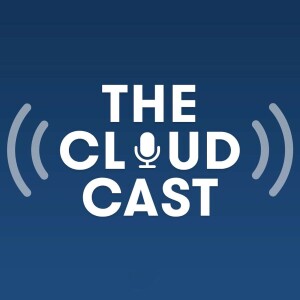
As open source companies and projects enter a transition phase of funding, licensing, community participation, let’s look at the characteristics of successful open source projects.
SHOW: 834
SHOW TRANSCRIPT: The Cloudcast #834 Transcript
SHOW VIDEO: https://youtube.com/@TheCloudcastNET
CLOUD NEWS OF THE WEEK - http://bit.ly/cloudcast-cnotw
CHECK OUT OUR NEW PODCAST - "CLOUDCAST BASICS"
SHOW SPONSOR:
- Panoptica, Cisco’s Cloud Application Security solution
SHOW NOTES:
- 10 Years of Kubernetes
- 30 Years of Linux
- 10 Years of OpenStack
- 25 Years of Java
WHAT DOES SUCCESS MEAN IN OPEN SOURCE?
- There are 1000s of widely used open source projects, from Linux to Java to MySQL to Docker to Kubernetes to MongoDB
- Less projects are successful from a monetization perspective, but that’s about individual business models
- Plenty of companies during the 2010s-2020s treated open source as “marketing” and not really a development model
WHAT DOES COMMERCIAL SUCCESS LOOK LIKE IN OPEN SOURCE?
- Wide usage infrastructure - Linux, Kubernetes, OpenStack
- Complex projects vs. “it just works”
- Critical security - Vault
- Complex data services - MongoDB, Kafka
- Many companies contributing (share the costs) - Linux, Kubernetes
- Management / Observability Engines - Crossplane, Prometheus
- Programming Languages - Java, Rust, Go, Python, Ruby, etc.
- Cloud services hiding complexity
- Cloud services stretching across clouds
- Single vendor projects - often move to non-OSS licensing
- Single vendor projects - difficult to maintain at scale
FEEDBACK?
- Email: show at the cloudcast dot net
- Twitter: @cloudcastpod
- Instagram: @cloudcastpod
- TikTok: @cloudcastpod
More Episodes
Harnessing AI for Enterprise Adoption
 2024-01-28
2024-01-28
 2024-01-28
2024-01-28
Wiring the Winning Organization
 2024-01-24
2024-01-24
 2024-01-24
2024-01-24
Technology Shifts vs. Drifts
 2024-01-21
2024-01-21
 2024-01-21
2024-01-21
AWS vs. Azure
 2024-01-17
2024-01-17
 2024-01-17
2024-01-17
Is 2024 the Year of Accountability?
 2024-01-14
2024-01-14
 2024-01-14
2024-01-14
2024 Look Ahead - Surviving the Q1 Kickoff
 2024-01-10
2024-01-10
 2024-01-10
2024-01-10
Is Cloud just a feature now?
 2024-01-07
2024-01-07
 2024-01-07
2024-01-07
2023 Year in Review and 2024 Predictions
 2023-12-24
2023-12-24
 2023-12-24
2023-12-24
The Industry Fallout from OpenAI 2023
 2023-12-20
2023-12-20
 2023-12-20
2023-12-20
2023 End of Year Mailbag
 2023-12-17
2023-12-17
 2023-12-17
2023-12-17
SaaS Analytics and Dashboards
 2023-12-13
2023-12-13
 2023-12-13
2023-12-13
How AWS has evolved on Day 2
 2023-12-10
2023-12-10
 2023-12-10
2023-12-10
LLMOps & Conversational Intelligence for AI
 2023-12-06
2023-12-06
 2023-12-06
2023-12-06
From Cloud to Cloud-native to COVID
 2023-12-03
2023-12-03
 2023-12-03
2023-12-03
Culture, Teams and Adoption of FinOps
 2023-11-29
2023-11-29
 2023-11-29
2023-11-29
Building the Foundations of the Modern Cloud
 2023-11-26
2023-11-26
 2023-11-26
2023-11-26
2001- a DotCom Bubble Odyssey
 2023-11-19
2023-11-19
 2023-11-19
2023-11-19
Intro to Vector Databases
 2023-11-15
2023-11-15
 2023-11-15
2023-11-15
012345678910111213141516171819
Create your
podcast in
minutes
- Full-featured podcast site
- Unlimited storage and bandwidth
- Comprehensive podcast stats
- Distribute to Apple Podcasts, Spotify, and more
- Make money with your podcast
It is Free
- Privacy Policy
- Cookie Policy
- Terms of Use
- Consent Preferences
- Copyright © 2015-2024 Podbean.com





